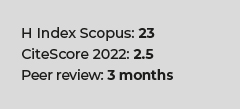Risks and benefits of internet use among people living with HIV/AIDS in Lima, Perú
DOI:
https://doi.org/10.17843/rpmesp.2007.243.1114Keywords:
HIV, Sexually Transmitted Infections, PerúAbstract
Objective: To evaluate use of the Internet for seeking sex partners and information on HIV and/or sexually transmitted infections (STIs) among people living with HIV/AIDS (PLWHA). Materials and methods: We interviewed consecutive PLWHA attending at Vía Libre, in Lima, Peru, between May and June 2004. Results: Of 100 PLWHA, (46 men who had sex with men [MSM], 18 heterosexual men and 36 women), 59% reported using the Internet in the last 12 months. Of these, the majority (73%) accessed the Internet at a public place; 16 (27,1%) reported having gone online to search for sexual partners; and five (8,5%) reported having had sex with a partner found over the Internet. All sex seekers were men, of them a greater percentage were MSM rather than heterosexual (94% vs. 6%, p= 0,032). All five respondents who reported having had sex with a partner found online were MSM. Of those who accessed the Internet in the past year, 76% (47/59) had used it to find information on HIV/AIDS, and 39% (23/59) had used it to seek information on other STIs. Conclusions: Among PLWHA interviewed more than half reported Internet access. More than a quarter -almost exclusively MSM- had used it to search for sex partners, however, the majority had used the Internet to look for information about HIV/AIDS. These findings suggest that the Internet offers a convenient tool to engage high-risk MSM in online HIV/STI prevention.Downloads
Download data is not yet available.
Downloads
Published
2007-09-30
Issue
Section
Research Articles
How to Cite
1.
Alva IE, Blas MM, García PJ, Cabello R, Kimball AM, Holmes KK. Risks and benefits of internet use among people living with HIV/AIDS in Lima, Perú. Rev Peru Med Exp Salud Publica [Internet]. 2007 Sep. 30 [cited 2024 Apr. 25];24(3). Available from: https://rpmesp.ins.gob.pe/index.php/rpmesp/article/view/1114



























